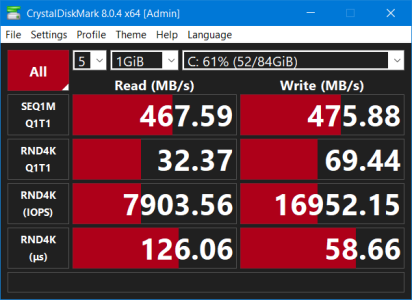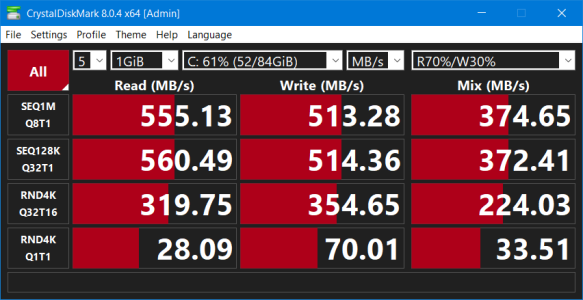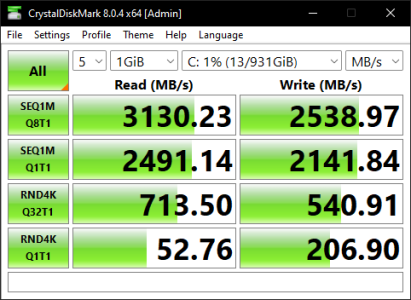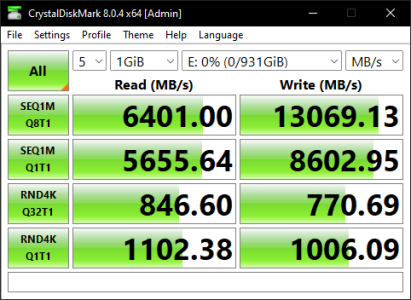Format _C:
2[H]4U
- Joined
- Jun 12, 2001
- Messages
- 3,885
I bought a cheap Team 1TB SSD and to put in perspective this appears as a tad bit faster then a 7.2K RPM 2.5" Spinner so needless to say I want to replace it.
Since it is so slow I'd assume this is DRAM-Less?
I want to know if this Samsung 870 EVO or This Samsung 870 QVO
drive has a DRAM Cache
Also why on the subject of cache-less Vs cached SSDs how can you tell this? Because they all say write "up to xxx MB/S as well as a different number for read speed
In my Amazon SSD order history I have the following drives and if someone doesn't mind can they tell me if they are cached or cache less
# 1 Western Digital 500GB WD Blue SN570
# 2 fanxiang S101
# 3 Crucial P2 1TB 3D NAND NVMe PCIe
# 4 Kingston SA400S37/240G
# 5 Samsung 860 EVO 500GB (MZ-76E500B/AM)
Thank You in advance LoL!
Since it is so slow I'd assume this is DRAM-Less?
I want to know if this Samsung 870 EVO or This Samsung 870 QVO
drive has a DRAM Cache
Also why on the subject of cache-less Vs cached SSDs how can you tell this? Because they all say write "up to xxx MB/S as well as a different number for read speed
In my Amazon SSD order history I have the following drives and if someone doesn't mind can they tell me if they are cached or cache less
# 1 Western Digital 500GB WD Blue SN570
# 2 fanxiang S101
# 3 Crucial P2 1TB 3D NAND NVMe PCIe
# 4 Kingston SA400S37/240G
# 5 Samsung 860 EVO 500GB (MZ-76E500B/AM)
Thank You in advance LoL!
Last edited:
As an Amazon Associate, HardForum may earn from qualifying purchases.
![[H]ard|Forum](/styles/hardforum/xenforo/logo_dark.png)



